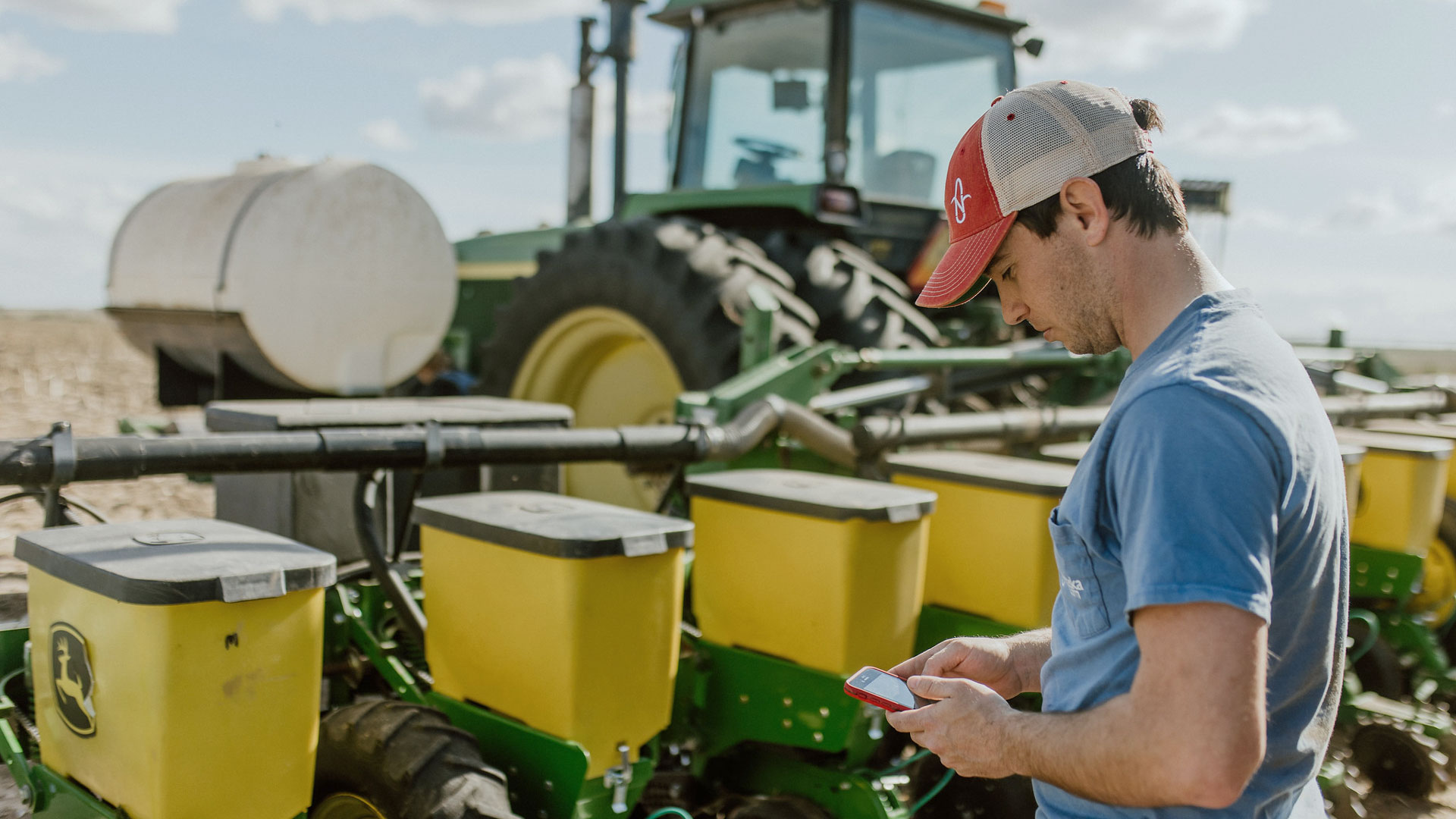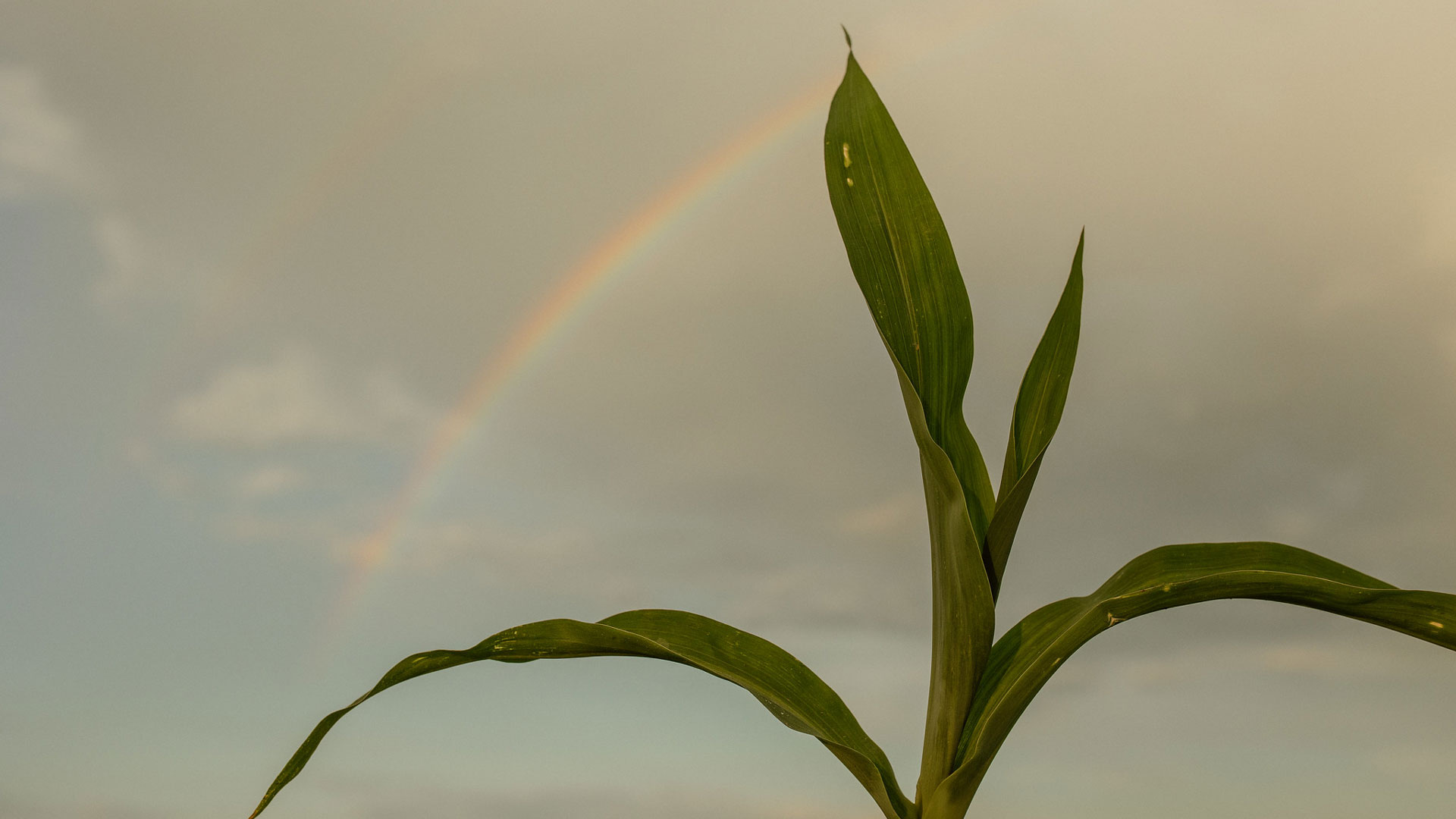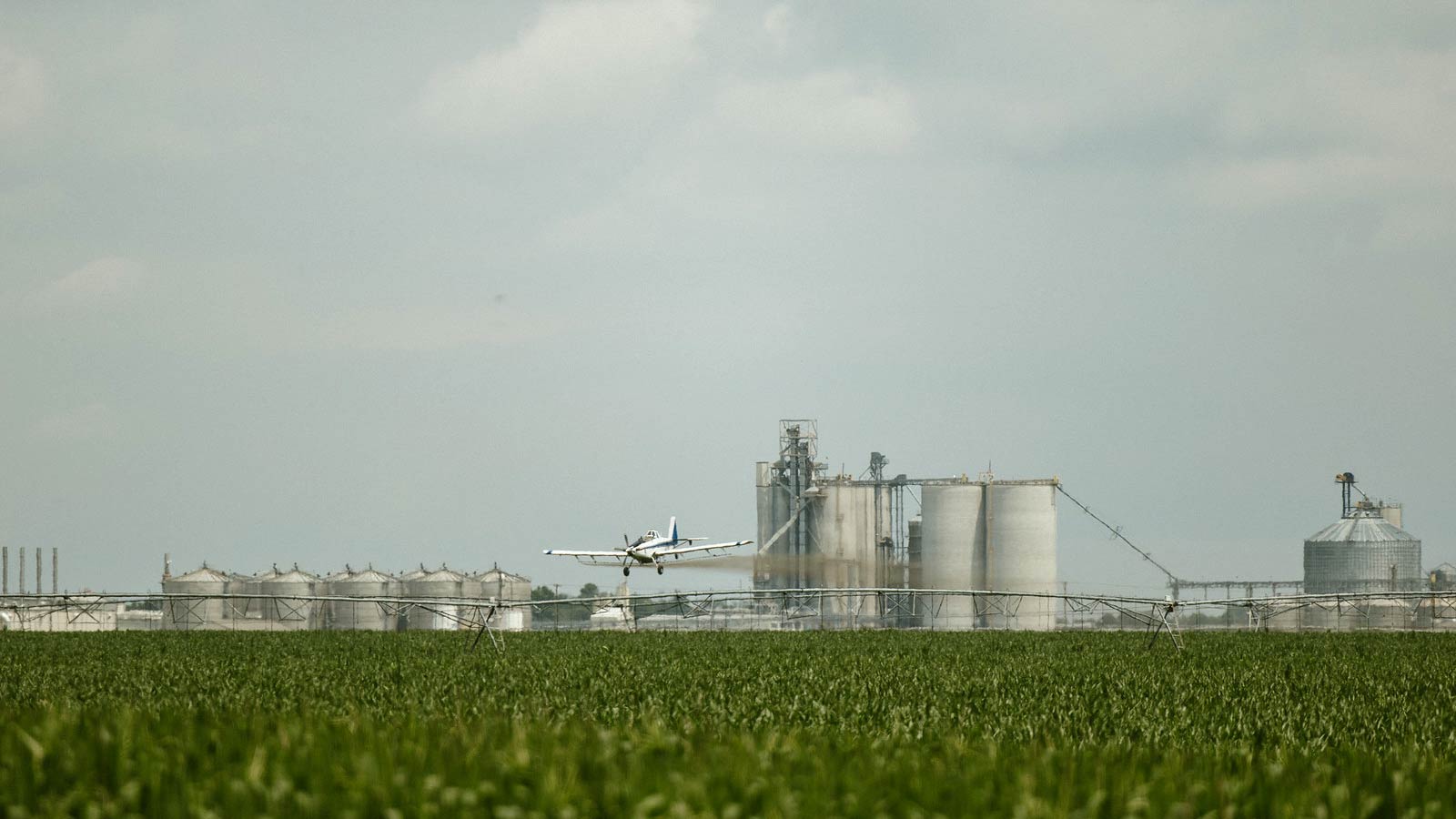1. Why do farmers detassel corn?
Each corn plant has a spikey top filled with pollen called a tassel. Farmers sometimes remove the tassel, a process called detasseling, from some corn plants to control pollination. Corn detasseling allows farmers to make sure that one variety of corn pollinates another. This creates a hybrid, or crossbred plant, and is normally used in fields where the goal is to produce seeds that can be used to grow corn in the future.
Typically, tassels will be removed from four rows of corn and then be left on the fifth row. This means there are four detasseled rows on either side of a row of corn that still has its tassels. This ensures the row of corn with its tassels still on will pollinate the detasseled rows on either side.
For many years, detasseling was done by hand. People would walk down the rows of their designated fields pulling the tassels off by hand. Now, it’s more likely that the tassels were removed by a machine and the only tassels pulled by hand are the ones the machine missed. Sometimes you’ll still see people, often teenagers, still detasseling by hand.
2. Why do farmers grow sunflowers?
In some areas of the country, farmers grow sunflowers near a corn field. Harvested for their seeds, sunflowers by themselves are a significant crop in the United States. When planted near corn, they have the additional benefit of drawing birds away from the corn while also enticing bees and other pollinating insects to the area.
Also, another reason farmers grow sun flowers near corn is because the tall, flowered plants can act as a windbreak to keep the corn from being blown over by strong winds.
3. Why do farmers roll their fields?
Farmers occasionally use a large flat rolling drum, called a roller, on rocky sections of their field to push down rocks. This prevents the rocks jutting up from the ground from catching on and damaging equipment when farmers are harvesting corn.
4. Why do farmers rotate their crops?
Farmers rotate their crops—planting different kinds of crops every year on a rotating basis—to put nutrients back in the soil.
Crop rotation can do that because different types of crops have unique nutritional needs. Corn, for example, uses a lot of nitrogen. Therefore, planting corn year after year in the same field would potentially take a great deal of nitrogen from the soil—potentially harming the soil or resulting in lower yields and increased fertilizer costs for the farmer.
Farmers can rectify that problem naturally by planting a crop like soybeans in a rotation. Soybeans have different nutritional needs than corn, and they not only use less nitrogen than corn, but they actually put nitrogen back into the soil. This is one reason why farmers rotate corn and soybeans.
In addition, rotating corn with another crop also helps cut down on problems with pests or disease that attack corn. This is effective on pests, such as a corn-specific fungus or worm, that need corn to survive or reproduce. By planting a different crop, farmers can break the pest’s life cycle or reduce the amount of a particular pest or insect larvae in the field soil.
5. Why do farmers plant cover crops?
Farmers plant cover crops as a way to prevent erosion, increase soil health and help control weeds. Cover crops grow in the off season—after the corn is harvested or before it is planted—so the field is never bare. Instead, the field is always filled with plants rooted firmly in the ground. Protecting against erosion in this way, which also helps raise corn yields by putting nutrients back into the soil, are two of the main reasons farmers plant cover crops.
Sometimes, cover crops are harvested. They also can be used as grazing ground for cattle or other animals. Types of cover crops vary quite a bit, from grasses like oats or winter rye to vegetables like beans or radishes.
6. Why do farmers bale cornstalks?
Farmers bale cornstalks so they can use them as bedding or feed for their livestock.
When used as bedding, chopped up stalks are spread inside barns or shelters so the animals can stand or lay on the stalks. Corn stalk bedding is an excellent way to keep livestock warm and dry in the winter.
In addition, many animals like to eat the corn stalks. They can be fed to animals, usually cattle, as a roughage to help with their digestion. It’s not unusual to see a cow, steer or goat enjoying a bite to eat while lying in a freshly bedded pen of cornstalks.
When farmers clean the manure out of their barns—often in the spring or fall—they will spread the soiled corn stalk bedding back out on their fields before or after harvest. This returns the nutrients from both the corn stalks and the manure to the farm fields, helping to improve the condition of the soil.
7. Why do farmers leave corn in the field?
Nebraska’s corn farmers are very efficient, so you won’t see many corn stalks left in a field after harvest with corn still on them. However, there are rare instances where you may see some rows of corn, or even large sections of a field, left unharvested over the winter:
- Snow Fence: If you see several rows of corn left standing along a busy road, it could be that corn was left in the field to help prevent the snow from drifting across the road. This is sometimes called a “living snow fence” and is a natural way to improve traffic safety in the winter.
- Food Plots: In some cases, a section of corn field is left unharvested as a part of a conservation effort for local wildlife. Called a food plot, this can provide valuable nutrition for wildlife, especially over the winter.
- Bad Weather/Late Harvest: Sometimes, corn is left standing in a field over the winter because the farmer was unable to harvest it before the snowy weather hit. While combines used to harvest corn can operate in cooler weather, they can become inoperable if parts freeze or their compartments become packed with snow.
8. Why do farmers harvest corn at night?
Often, farmers will harvest corn later in the day to allow the moisture and dew from the night before to dry before beginning harvest. This is to ensure the corn kernels are as dry as possible when they are harvested and cut down on the potential for breakdowns caused by wet corn stalks.
Farmers in areas of the country with extreme heat intentionally harvest some varieties of corn at night to take advantage of the cooler temperatures. In other areas, though, the headlights you see in the corn field late at night are more likely the result of farmers working overtime.
Corn farming sometimes requires burning the midnight oil, because corn needs to be harvested as soon as it’s ready. They make the vast majority of their money by selling their crop, so it’s absolutely critical to get that crop out of the field and safely sold or put in storage. Leaving it in the field could expose it to devastation by the weather, or put a farmer so far behind that he or she isn’t able to complete the harvest before winter hits and the fields become impassible due to snow.
Along that line, if it seems like every farmer in town is working late on the same night, you might want to check the forecast—there’s a good chance rain is on the way. One of the most common reasons many farmers in the same area will work late on the same night is because they’re trying to get as much corn harvested as possible before a storm or major rains moves into the area.
Heavy rains can put a farmer several days behind schedule by soaking the fields and making them far too muddy to be passable for the equipment needed for harvest. Once a field gets soggy and muddy due to rain, farmers can’t resume harvest until the field—and the corn—dries out.
9. Why do farmers leave four rows of corn?
It’s not often you see farmers leave four rows of corn standing in a field, but if you do there’s a few possible causes.
First, if the farmer is still in the field harvesting the corn it could be that he or she hasn’t gotten those rows yet. Just like two people might mow a lawn in a different pattern, some farmers like to harvest their corn in a particular way and might skip a few sections—generally, the width of their combine—and then get it later when making another pass in the fields.
If several rows are left standing at the end of the rows and parallel to a highway or busy road, it is likely they were left there to stop snow from drifting over the roadway during winter. Some farmers also leave a few rows unharvested as food for wildlife.
It’s also possible that a farmer might leave several rows of corn in a field because it is diseased, had a major pest infestation or for insurance purposes. If a section of field was damaged or if the farmer bought a particular variety of seed that didn’t live up to its billing—say, for example, the seed variety claimed to protect against worms that attack the corn’s roots, but the field still suffered extensive worm damage—an insurance agent or seed company representative may need to inspect the field.
10. Can Cows Graze a Cornfield After Harvest?
It’s not unusual to see cattle fanned out across a Nebraska cornfield after the fall harvest. This can cause some to wonder why they see cows in an empty field. Well, it turns out the field isn’t really empty and the cows are acting as the farmer’s cleanup crew.
While combines are very effective at stripping corn from the stalk and peeling the kernels from the cob, even the most efficient combines driven by the best farmers will leave an ear of corn behind here or there. Some kernels of corn also occasionally spill onto the ground when the farmer is transferring harvested corn from the combine into the grain wagons that haul the corn to market or storage.
Like many farm animals, cattle enjoy eating corn kernels as well as other parts such as the stalk and leaves. When turned out onto a field after harvest, cattle wil eat the stray ears of corn and kernels left on the ground. They also eat the leftover portions of the cornstalk closest to the ground, and snack on the ground-up pieces of stalk and leaves—called chaff—that was blown out the back of the combine during the harvesting process.
Letting cattle eat the leftover corn and cornstalks is a great way to make the most out of what the cornfield has to offer while providing a healthy food for the cattle. It also is good for the field, because manure created by the cows puts nutrients back into the soil.




